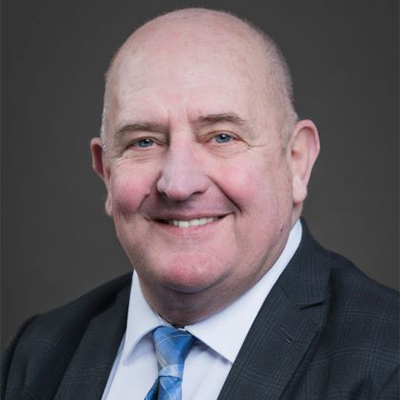Tensions are building over Northern Indiana Public Service Co.’s proposal last week to build a new natural gas peaking plant at its R.M. Schahfer Generating Station.
NIPSCO filed for permission with the Indiana Utility Regulatory Commission (IURC) to install a 400-MW, $643.7 million natural gas plant (45947). According to NIPSCO, the plant would be in service at the end of 2026 and replace two soon-to-be retired coal units at the Schahfer station. The utility intends to transfer the retiring units’ interconnection rights on the MISO transmission system to the new plant.
The utility is also proposing to use construction while in progress (CWIP) ratemaking, which would allow it to start billing customers for the plant prior to construction and commercial operations.
The Citizen Action Coalition of Indiana, an environmental and consumer advocate, says the new plant will be costly, unnecessary and detrimental to the clean energy transition.
Ben Inskeep, program director at CAC Indiana, said NIPSCO’s proposal means it has “backtracked” on its 2018 integrated resource plan, which saw no need for new fossil fuel plants.
“One of the troubling aspects of NIPSCO’s certificate of public necessity and need filing for up to 442 MW of new gas turbines is that it is inconsistent with its current IRP,” Inskeep said in a statement to RTO Insider. “NIPSCO’s 2018 IRP found that no new fossil gas resources were needed. NIPSCO’s 2021 IRP included a preferred plan that has ‘up to 300 MW’ of new gas. However, NIPSCO unilaterally and without stakeholder input conducted additional analyses after it completed its 2021 IRP that it now claims supports its decision to increase its new natural gas capacity by 47% relative to its most recent IRP.”
NIPSCO insists the gas-fired plant is necessary and said its addition was previously contemplated in its 2021 IRP. The utility said by the time it retires all its coal-fired generation in 2028, renewable energy will begin to dominate its energy mix, and it will need a source of flexible generation during peak energy use and extreme weather conditions in the winter and summer.
NIPSCO spokesperson Tara McElmurry said the utility requires a new gas-fired peaker to “support system reliability and resiliency, along with public safety, as part of a cleaner and more balanced energy mix for the future.”
“NIPSCO is committed to creating a reliable, sustainable supply of energy that will serve customers — both now and in the future,” McElmurry said in a statement to RTO Insider. The peaker will run only when necessary and act as a “bridge for the generation gaps of more intermittent energy sources.” She said NIPSCO’s goal to achieve net-zero carbon emissions by 2040 remains unchanged, and it will have the option to convert the plant’s fuel source to hydrogen in the future.
In testimony to the IURC, NIPSCO Vice President of Power Delivery David Walter said he is aware “some stakeholders would prefer that NIPSCO only implement renewable generation resources going forward.” However, he said that is not the most prudent option and that the plant will be “at least partially responsible for unlocking the long-term customer savings that are expected from NIPSCO’s overall generation transition.”
NIPSCO said its need for a peaking plant was emphasized through an updated portfolio analysis this year that “incorporated market shifts and changes” since its 2021 IRP. The utility included the effects of inflation, MISO’s new seasonal capacity market design and availability-based capacity accreditation, passage of the Inflation Reduction Act, and portfolio needs under the clean energy transition.
But Inskeep said NIPSCO shouldn’t be spending “exorbitant sums of ratepayer dollars to build more fossil fuel infrastructure that will hardly ever operate.” He said he is unconvinced NIPSCO needs a “massive expansion of natural gas” and that it did not adequately consider energy storage with grid-forming inverters, demand response or purchases from the MISO markets before it issued a request for proposals for thermal generation only.
NIPSCO maintains that using its existing facilities and some existing equipment at the Schahfer station will save customers money.
Inskeep also said CAC is “highly alarmed at the extraordinary expense” of the new units and the direction NIPSCO is taking on construction and financing.
NIPSCO rejected all three bids in response to its RFP. It was ultimately unable to land on an affordable engineering, procurement and construction agreement with an outside party, and plans to self-build the project.
Inskeep said the self-build prospect is a risky bet for ratepayers. He pointed out that, according to staff testimony, NIPSCO has not ventured into self-building a gas plant before. He also criticized NIPSCO’s plan to use CWIP, saying it is inappropriate for utilities to pass costs onto customers before they even incur them.
“Ratepayers will be paying for the gas turbines before they are used and useful, and even if they never generate any electricity. CWIP has a notorious reputation in utility ratemaking for harming ratepayers by shifting project risk from utility shareholders onto ratepayers,” Inskeep said.
NIPSCO can file to charge customers in advance of the project under a “clean energy” designation because the Indiana legislature passed a bill this year allowing utilities to use the financing option when they construct new natural gas plants that displace coal.
